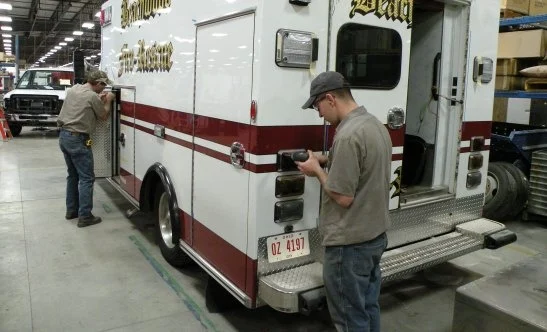Serving the transport of patients day and night and accommodating different types of pathologies, the ambulance must be a reference in terms of hygiene. It must also be equipped with technical performance to ensure the rescue and life support of a patient. These few steps are essential to maintain this means of transport.
Cleaning
As with any other type of maintenance, cleaning must be on the first list. It must be reinforced by disinfection to avoid bacterial contamination. Moreover, it must be done daily, depending on the patient’s case. Thus, in the case of benign disease, cleaning is required after having transported 2 successive patients. On the other hand, it will be implemented after each transport and followed by necessary disinfection for a contagious disease.
In addition, cleaning must be strictly controlled to ensure that protocols are followed. For this purpose, an observation book must be filled in.
Tips on Cleaning
For better hygiene, you should follow these guidelines. Disinfected objects should be separated from contaminated ones, and dirty objects from clean ones. In addition, to achieve a good cleaning, you must start with the cleanest to the dirtiest. Use two containers, one containing the detergent solution and water and the other containing the rinse water.
For disinfection, spray the work surface, mattress, etc., with disinfectant. Let dry without rinsing.
Disinfection
Exposed to various diseases, ambulance drivers and other personnel must protect themselves. Thus, a simple cleaning is not enough to ensure the hygiene of an ambulance. It must be followed by disinfection to destroy microbes and pathogens on the work surfaces, all surfaces such as walls and ceiling, and on medical instruments. To do this, using a sprayer, the disinfectant is applied to the entire interior surface of an ambulance. Then, without rinsing, it is left to act for at least 15 minutes while the car is closed. This allows immunization for the staff and the patients. Similarly, soiled materials are also soaked in a disinfectant solution to enable their reuse. Do not forget to wear gloves, an overblouse, and masks during disinfection.
Sterilization of Medical Devices
Sterilization consists of killing micro-organisms on medical equipment using heat treatment. It allows the material to be reused without risk of contamination. It mainly concerns surgical materials made of glass, stainless steel, or rubber. In the case of an ambulance, this can be scissors or dressing material, but also the reusable collection system or the mucus aspirator. This medical device is used to clear the airways by removing mucus, blood, etc. It is carried out using an autoclave. There are several sterilization techniques, the most common being steam sterilization.

The Cleaning Material
Protective equipment
As in the workplace, cleaning or sanitary regulations are part of the work of ambulance drivers because it is to preserve their health and that of patients. To do this, they must always be equipped with gloves, mouth guards, gowns, etc.
The Cleaning Cart
Opt for a cart for a more practical and professional cleaning for professional cleaning. It allows you to have all the necessary equipment at your disposal, including washing buckets, rinsing water, mops, detergents, etc. It also makes cleaning easier and faster.
Household equipment
As for any other cleaning, household equipment such as cloths, wipes, and vacuum cleaners are required.
Technical Inspection of Car Equipment
The maintenance of automotive equipment is essential to avoid accidents and ensure the quality of the ambulance service. Thus, the siren, tires, speed, and brake are subject to technical control to ensure their proper functioning.

